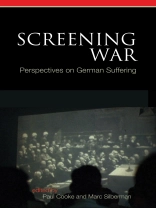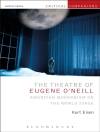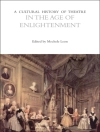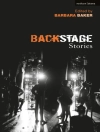Re-examines German cinema’s representation of the Germans as victims during the Second World War and its aftermath.
The recent ‘discovery’ of German wartime suffering has had a particularly profound impact in German visual culture. Films from Margarethe von Trotta’s
Rosenstrasse (2003) to Oliver Hirschbiegel’s Oscar-nominated
Downfall (2004) and the two-part television mini-series
Dresden (2006) have shown how ordinary Germans suffered during and after the war. Such films have been presented by critics as treating a topic that had been taboo for German filmmakers. However, the representation of wartime suffering has a long tradition on the German screen. For decades, filmmakers have recontextualized images of Germans as victims to engage shifting social and ideological discourses. By focusing on this process, the present volume explores how the changing representation of Germans as victims has shaped the ways in which both of the postwar German states and the now-unified nation have attempted to facethe trauma of the past and to construct a contemporary place for themselves in the world.
Contributors: Seán Allan, Tim Bergfelder, Daniela Berghahn, Erica Carter, David Clarke, John E. Davidson, Sabine Hake, Jennifer Kapczynski, Manuel Köppen, Rachel Palfreyman, Brad Prager, Johannes von Moltke.
Paul Cooke is Professor of German Cultural Studies at the University of Leeds and Marc Silberman is Professor of German at the University of Wisconsin.
Table des matières
Introduction: German Suffering? – Paul Cooke and Marc Silberman
Armchair Warriors: Heroic Postures in the West German War Film – Jennifer M. Kapczynski
German Martyrs: Images of Christianity and Resistance to National Socialism in German Cinema – David Clarke
The Rhetoric of Victim Narratives in West German Films of the 1950s – Manuel Koeppen
Sissi the Terrible: Melodrama, Victimhood, and Imperial Nostalgia in the
Sissi Trilogy – Erica Carter
Political Affects: Antifascism and the Second World War in Frank Beyer and Konrad Wolf – Sabine Hake
Shadowlands: The Memory of the
Ostgebiete in Contemporary German Film and Television – Tim Bergfelder
Links and Chains: Trauma between the Generations in the Heimat Mode – Rachel Palfreyman
Resistance of the Heart: Female Suffering and Victimhood in DEFA’s Antifascist Films – Daniela Berghahn
Suffering and Sympathy in Volker Schlöndorff’s
Der neunte Tag and Dennis Gansel’s
Na Pol A – Brad Prager
Eberhard Fechner’s History of Suffering: TV Talk, Temporal Distance, Spatial Displacement – John Davidson
The Politics of Feeling: Alexander Kluge on War, Film, and Emotion – Johannes von Moltke
Post-unification German-Jewish Relations and the Discourse of Victimhood in Dani Levy’s Films – Sean Allan
A propos de l’auteur
SEÁN ALLAN is Professor of German at the University of St Andrews. He studied at Emmanuel College, Cambridge and at the Humboldt Universität in what was then East Berlin. From 2001-2016 he worked at the University of Warwick before moving to St Andrews in 2016 as Professor of German. His main research areas regard the culture of the European Enlightenment, interdisciplinary approaches to the mediation of music and the visual arts, as well as translation and translation studies. He is the author of The Plays of Heinrich von Kleist: Ideals and Illusions (1996) and The Stories of Heinrich von Kleist: Fictions of Security (Camden House, 2001). He is the co-editor of a special edition of German Life and Letters, entitled Heinrich von Kleist: Performance and Performativity (2011); the co-editor of the volumes Kleist, Education and Violence: The Transformation of Ethics and Aesthetics and Konstruktive und destruktive Funktionen von Gewalt im Werk Heinrich von Kleists (2012), and Re-Imagining DEFA: East German Cinema in its National and Transnational Contexts (2016); and the co-author of the monograph Unverhoffte Wirkungen: Erziehung und Gewalt im Werk Heinrich von Kleists (2014). His most recent book, Screening Art: Modernism and the Socialist Imaginary in East German Cinema (2019), investigates questions of intermediality and spans not only film, but also literature, music, and the visual arts in post-war cinema.












